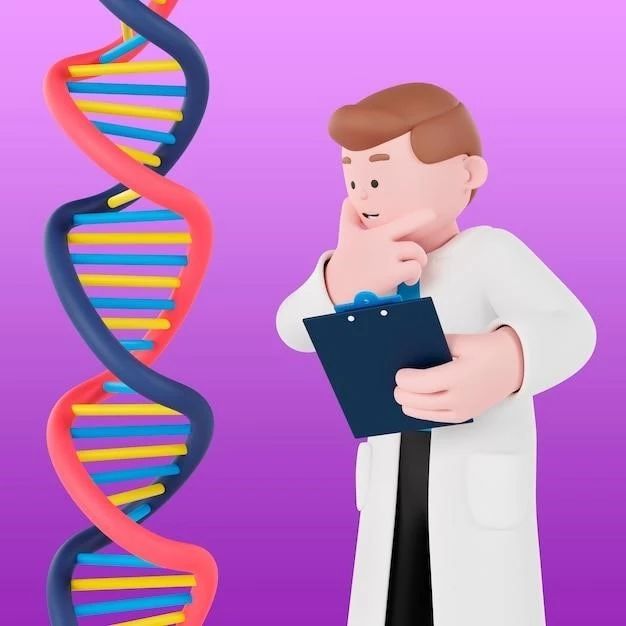Overview of Van Den Bosch Syndrome
Van Den Bosch Syndrome is characterized by intellectual deficit, choroideremia, acrokeratosis verruciformis, anhidrosis, and skeletal deformities․ It is transmitted as an X-linked recessive trait and may be caused by a small X-chromosome deletion․
Description and Symptoms
Van Den Bosch Syndrome is a rare genetic disorder characterized by intellectual deficit, choroideremia, acrokeratosis verruciformis, anhidrosis, and skeletal deformities․ It is inherited as an X-linked recessive trait, with symptoms typically appearing in childhood․ Individuals with this syndrome may experience a range of challenges affecting cognitive abilities, vision, skin, sweat gland function, and bone development․ Early diagnosis and appropriate management strategies are crucial for optimizing patient outcomes․
Genetic Basis of Van Den Bosch Syndrome
Van Den Bosch Syndrome is an X-linked recessive condition likely caused by a small X-chromosome deletion․ It manifests as intellectual deficit, choroideremia, acrokeratosis verruciformis, anhidrosis, and skeletal deformities․
X-linked Recessive Inheritance
Van Den Bosch Syndrome is linked to an X-chromosome genetic mutation, typically inherited in an X-linked recessive pattern․ This syndrome encompasses a spectrum of symptoms impacting various physiological systems, such as the central nervous system, vision, skin, sweat glands, and skeletal structure․ Understanding the genetic basis is crucial for accurate diagnosis and management․
Clinical Manifestations of Van Den Bosch Syndrome
Van Den Bosch Syndrome presents with intellectual deficit, choroideremia, acrokeratosis verruciformis, anhidrosis, and skeletal deformities, all linked to X-linked recessive inheritance․
Intellectual Deficit
Individuals with Van Den Bosch Syndrome may exhibit an intellectual deficit as one of the primary clinical manifestations․ This cognitive impairment is part of a spectrum of symptoms associated with this X-linked recessive disorder, impacting various aspects of daily functioning and overall quality of life․
Choroideremia
Choroideremia is a key feature of Van Den Bosch Syndrome, characterized by progressive vision impairment due to degeneration of the choroid and retina․ Individuals with this condition may experience gradual deterioration of their vision, impacting their daily life and quality of life significantly․
Acrokeratosis Verruciformis
Among the clinical manifestations of Van Den Bosch Syndrome is acrokeratosis verruciformis, a skin abnormality that may present as wart-like growths on the skin․ This feature, along with other symptoms, contributes to the complex nature of this rare X-linked recessive disorder․
Anhidrosis
Anhidrosis, the inability to sweat properly, is a notable clinical feature of Van Den Bosch Syndrome․ This condition can lead to challenges in regulating body temperature and may require specific management strategies to address this symptom effectively․
Skeletal Deformities
Skeletal deformities are a significant part of Van Den Bosch Syndrome, contributing to the unique clinical manifestations of this rare disorder․ These skeletal abnormalities are one of the key features observed alongside intellectual deficit, choroideremia, acrokeratosis verruciformis, and anhidrosis in individuals affected by this syndrome․

Diagnosis and Treatment Approaches
Van Den Bosch Syndrome diagnosis involves recognizing a combination of symptoms․ Management strategies aim to address specific manifestations like intellectual deficit, choroideremia, acrokeratosis verruciformis, anhidrosis, and skeletal deformities in affected individuals․
Diagnostic Methods
Diagnosing Van Den Bosch Syndrome involves recognizing a combination of symptoms like intellectual deficit, choroideremia, acrokeratosis verruciformis, anhidrosis, and skeletal deformities․ Healthcare providers rely on a thorough clinical evaluation and possibly genetic testing to confirm the diagnosis․
Management Strategies
Management strategies for Van Den Bosch Syndrome aim to address specific symptoms like intellectual deficit, choroideremia, acrokeratosis verruciformis, anhidrosis, and skeletal deformities․ Multidisciplinary care involving medical, educational, and supportive interventions is crucial for optimizing the quality of life for individuals affected by this syndrome․

Research and Resources on Van Den Bosch Syndrome
Van Den Bosch Syndrome research focuses on symptoms like intellectual deficit, choroideremia, acrokeratosis verruciformis, anhidrosis, and skeletal deformities․ Various resources offer support and information for individuals and families affected by this rare X-linked recessive disorder․
Support Groups and Communities
Support groups and communities play a vital role in providing assistance and resources for individuals and families affected by Van Den Bosch Syndrome․ These platforms offer a supportive environment, valuable information, and a sense of community for those navigating the challenges of this rare X-linked recessive disorder․
Healthcare Providers and Research Sources
Healthcare providers and research sources play a critical role in advancing knowledge and treatment options for Van Den Bosch Syndrome․ Access to knowledgeable healthcare professionals and reputable research outlets is essential for individuals affected by this rare X-linked recessive disorder․
Impact of Genetic Mutations on Syndrome Development
Genetic mutations, including X-linked recessive traits, play a crucial role in the development of Van Den Bosch Syndrome․ Understanding the genetic basis is essential for diagnosing and managing this rare disorder effectively․
Hereditary and Random Mutation Causes
Van Den Bosch Syndrome can result from hereditary genetic mutations, inherited through parental transmission, or random mutations during cell division․ Both hereditary and spontaneous genetic changes can contribute to the development of this rare X-linked recessive disorder․
Other Syndromes Related to Van Den Bosch Syndrome
Various syndromes related to Van Den Bosch Syndrome include ARX-Associated XLID and Leigh Syndrome․ These disorders share certain characteristics and inheritance patterns, contributing to the spectrum of genetic conditions affecting individuals․
ARX-Associated XLID
ARX-Associated XLID, also known as Partington Syndrome, involves a spectrum of intellectual disability, tonic seizures, dystonia, myoclonic epilepsy, and other neurological manifestations․ This syndrome is associated with the ARX gene and X-linked inheritance pattern․
Leigh Syndrome
Leigh Syndrome is an early-onset progressive neurodegenerative disorder with distinct neuropathological features affecting multiple regions of the central nervous system․ This syndrome is characterized by a range of neurological manifestations and can have a severe impact on affected individuals․
Prognosis and Outlook for Patients with Van Den Bosch Syndrome
Patients with Van Den Bosch Syndrome face challenges associated with intellectual deficit, choroideremia, acrokeratosis verruciformis, anhidrosis, and skeletal deformities․ Understanding the genetic mutations underlying the syndrome is crucial for developing effective treatment strategies and improving patient outcomes․
